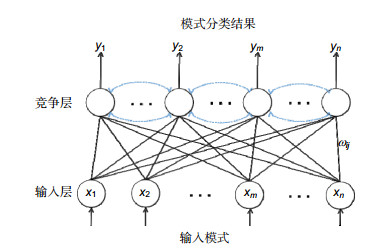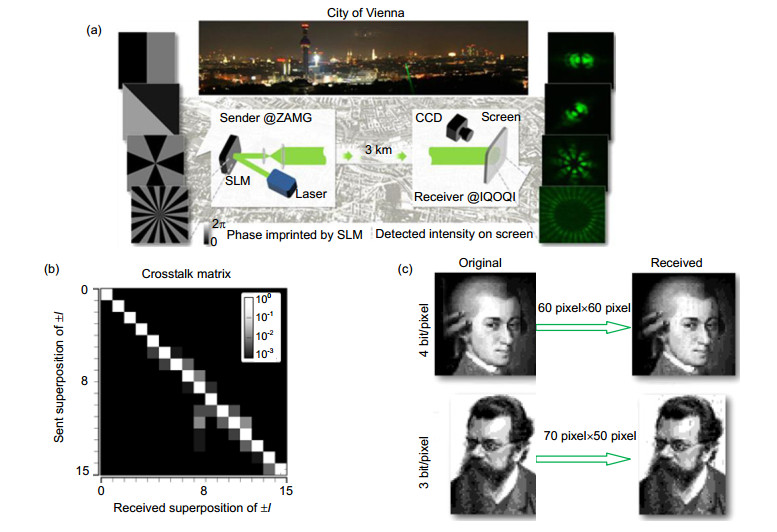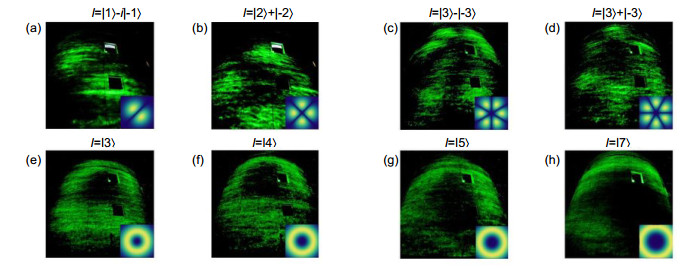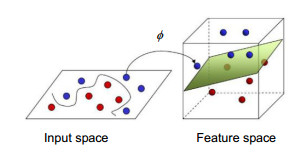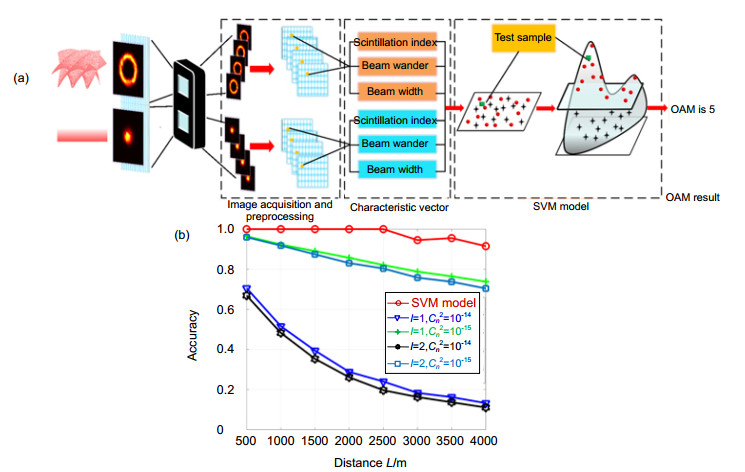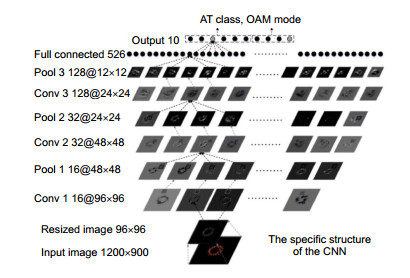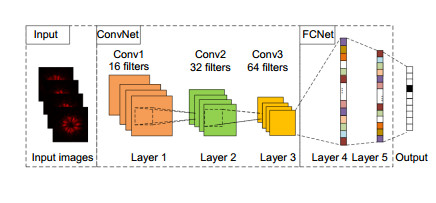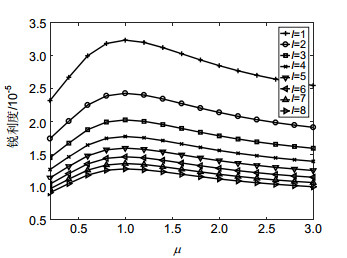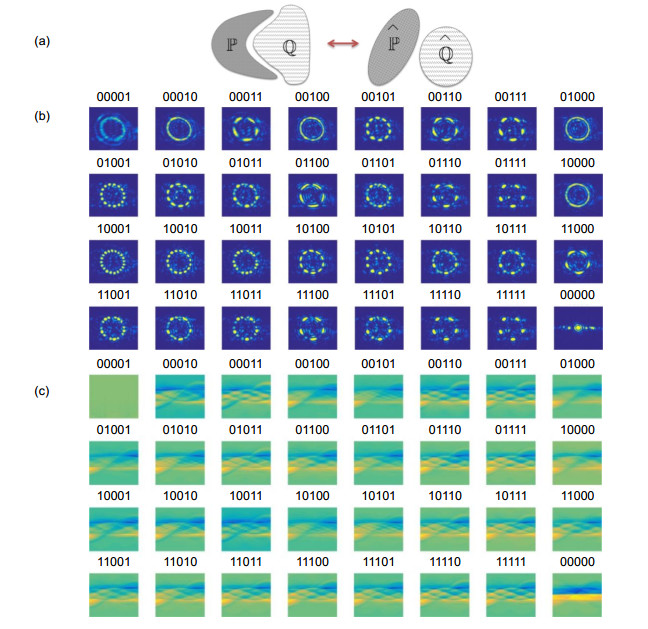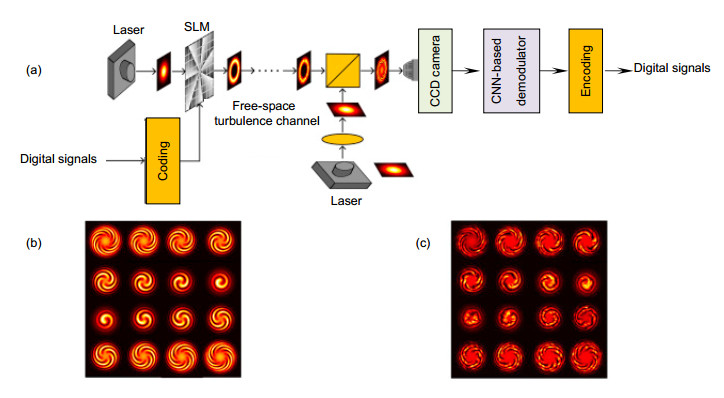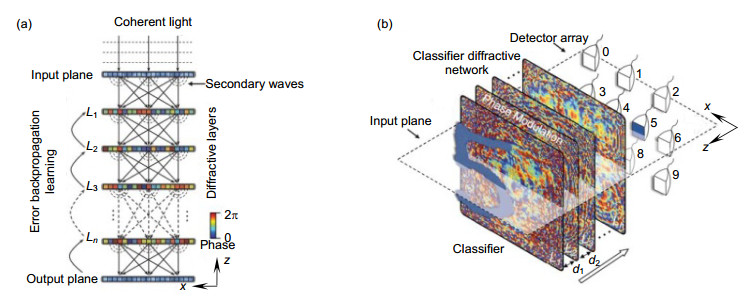Research progress of orbital angular momentum modes detecting technology based on machine learning
-
摘要:
轨道角动量(OAM)复用和编码技术可有效提高光通信系统信道容量。近些年研究者提出将机器学习(ML)技术用于OAM模式探测以提高OAM光通信系统性能。本文对基于机器学习的OAM模式探测方案进行了综述,包括误差反向传播(BP)神经网络、自组织神经网络(SOM)、支持向量机(SVM)、卷积神经网络(CNN)、光束变换辅助的识别技术以及全光衍射深度神经网络(D2NN),分析了各类机器学习OAM探测器在对抗大气、水下信道带来的干扰时展现出的性能差异以及各自优势。
Abstract:The orbital angular momentum (OAM) multiplexing and encoding technologies can effectively increase the channel capacity of the optical communication systems. In recent years, some researchers focus on using machine learning (ML) technology to detect OAM modes to improve the performance of OAM optical communication system. In this paper, the OAM modes detecting schemes based on ML technology are reviewed, including error back-propagating (BP) neural networks, self-organizing feature map (SOM), support vector machine (SVM), convolutional neural network (CNN), mode recognition techniques base on beam transformations and all-optics diffractive deep neural networks (D2NN). The performance, advantages and obstacles of each kind of the neural networks in atmosphere and underwater channels are analyzed.
-
Key words:
- orbital angular momentum /
- machine learning /
- neural network
-

Overview: The orbital angular momentum (OAM) modes have orthogonality in theory, thus using OAM multiplexing and encoding technologies can effectively increase the channel capacity of the optical communication systems. However, the phase distributions of OAM modes are sensitive to the channel distribution. The particles and turbulence in atmospheric and underwater channels would lead to the absorptions, scatterings and phase distortions of the beams and decrease the performance of the OAM optical communication system. In recent years, some researchers focus on using machine learning (ML) technology to detect OAM modes to improve the performance of OAM optical communication system. ML technologies have advantages in self-studying and are more tolerant to noise compared to the traditional image recognition technology. In this paper, the OAM modes detecting schemes based on ML technology are reviewed, including error back-propagating (BP) neural networks, self-organizing feature map (SOM), support vector machine (SVM), convolutional neural network (CNN), mode recognition techniques base on beam transformations and diffractive deep neural networks (D2NN). In general, artificial neural networks (ANN), such as BP-ANN, are the earliest ML methods to detecting OAM modes although the detecting accuracies are not high (with 8.33% error ratio in 143 km transmissions); while researches using SVM are not identifying the intensity distributions of OAM beams but the parameters of the beams. The CNN is mainly designed for image classifications thus it has natural advantages in detecting intensity images of OAM beams. The convolutional and pooling operating can make CNNs not sensitive to small offset and extract features by themselves. The research results show that with OAM intensity as the input images, decoding accuracies of LeNet and AlexNet structures can reach more than 99% in even strong atmospheric turbulence no matter with simulations and in lab environments, which are higher than the ANNs. Some improvements of the CNN structures are also made to increase the accuracies. Some researches focus on image transformation of the input pictures, such as angular spectrum transforming, R-CDT transforming, which can efficiently raise the accuracies. While one of the disadvantages of the all-electrical neural networks is the high time delay. In 2018, researchers proposed a kind of all-optical neural network called D2NN and used it as OAM detector, which can realize relative high accuracies without time delay. All in all, the OAM detectors using ML can achieve high detecting accuracies compared to traditional OAM sorting methods.
-

-
图 17 (a) 基于相干光干涉探测的CNN-OAM模式识别系统结构图;(b) OAM叠加光束的干涉条纹;(c)受到大气湍流干扰的OAM叠加光束的干涉条纹[44]
Figure 17. (a) Structure of CNN-OAM detecting system based on coherent optical interference; (b) Interference fringes of OAM superposition beams; (c) Interference fringes of OAM superposition beams propagating in atmospheric turbulence channels[44]
-
[1] 翟旭华, 张洪涛, 姜威远.国外空间激光链路通信技术进展[J].无线光通信, 2004, 28(1): 42–45. http://d.old.wanfangdata.com.cn/Periodical/gtxjs200401013
Zhai X H, Zhang H T, Jiang W Y. The development of space laser link communications technique[J]. Optical Communication Technology, 2004, 28(1): 42–45. http://d.old.wanfangdata.com.cn/Periodical/gtxjs200401013
[2] Chan V. Space coherent optical communication systems--An introduction[J]. Journal of Lightwave Technology, 1987, 5(4): 633–637. doi: 10.1109/JLT.1987.1075543
[3] Chan V W S. Free-space optical communications[J]. Journal of Lightwave Technology, 2006, 24(12): 4750–4762. doi: 10.1109/JLT.2006.885252
[4] Allen L, Beijersbergen M W, Spreeuw R J C, et al. Orbital angular momentum of light and the transformation of Laguerre-Gaussian Laser modes[J]. Physical Review A, 1992, 45(11): 8185–8189. doi: 10.1103/PhysRevA.45.8185
[5] Gibson G, Courtial J, Padgett M J, et al. Free-space information transfer using light beams carrying orbital angular momentum[J]. Optics Express, 2004, 12(22): 5448–5456. doi: 10.1364/OPEX.12.005448
[6] Mandel L, Wolf E, Shapiro J H. Optical coherence and quantum optics[J]. Physics Today, 1996, 49(5): 172. http://d.old.wanfangdata.com.cn/NSTLQK/NSTL_QKJJ0232334585/
[7] 席瑞, 朱冰. OAM光束短距离自由空间传输特性的实验研究[J].光电工程, 2019, 46(6): 180386. doi: 10.12086/oee.2019.180386
Xi R, Zhu B. Experimental study on short-distance free-space transmission characteristics of OAM beam[J]. Opto-Electronic Engineering, 2019, 46(6): 180386. doi: 10.12086/oee.2019.180386
[8] Wang J, Yang J Y, Fazal I M, et al. 25.6-bit/s/Hz spectral efficiency using 16-QAM signals over pol-muxed multiple orbital-angular-momentum modes[C]//Proceedings of IEEE Photonic Society 24th Annual Meeting, 2011: 587–588.
[9] Bozinovic N, Yue Y, Ren Y X, et al. Terabit-scale orbital angular momentum mode division multiplexing in fibers[J]. Science, 2013, 340(6140): 1545–1548. doi: 10.1126/science.1237861
[10] Fazal I M, Ahmed N, Wang J, et al. 2 Tbit/s free-space data transmission on two orthogonal orbital-angular-momentum beams each carrying 25 WDM channels[J]. Optics Letters, 2012, 37(22): 4753–4755. doi: 10.1364/OL.37.004753
[11] Huang H, Xie G D, Yan Y, et al. 100 Tbit/s free-space data link using orbital angular momentum mode division multiplexing combined with wavelength division multiplexing[C]//Proceedings of 2013 Optical Fiber Communication Conference and Exposition and the National Fiber Optic Engineers Conference, 2013: 1–3.
[12] Wei S B, Wang D P, Lin J, et al. Demonstration of orbital angular momentum channel healing using a Fabry-Pérot cavity[J]. Opto-Electronic Advances, 2018, 1(5): 180006. doi: 10.29026/oea.2018.180006
[13] Awaji Y, Wada N, Toda Y. Demonstration of Spatial Mode Division Multiplexing using Laguerre-Gaussian Mode Beam in telecom-wavelength[C]//Proceedings of 2010 23rd Annual Meeting of the IEEE Photonics Society, 2010: 551–552.
[14] Wang J, Yang J Y, Fazal I M, et al. Terabit free-space data transmission employing orbital angular momentum multiplexing[J]. Nature Photonics, 2012, 6(7): 488–496. doi: 10.1038/nphoton.2012.138
[15] Huang H, Ren Y X, Yan Y, et al. Performance analysis of spectrally efficient free-space data link using spatially multiplexed orbital angular momentum beams[J]. Proceedings of SPIE, 2013, 8647: 864706. doi: 10.1117/12.2004886
[16] Huang H, Xie G D, Yan Y, et al. 100 Tbit/s free-space data link enabled by three-dimensional multiplexing of orbital angular momentum, polarization, and wavelength[J]. Optics Letters, 2014, 39(2): 197–200. http://www.wanfangdata.com.cn/details/detail.do?_type=perio&id=7ba2a85f337dde1b280632f86da87352
[17] Wang J, Li S H, Luo M, et al. N-dimentional multiplexing link with 1.036-Pbit/s transmission capacity and 112.6-bit/s/Hz spectral efficiency using OFDM-8QAM signals over 368 WDM pol-muxed 26 OAM modes[C]//Proceedings of 2014 the European Conference on Optical Communication, 2014: 1–3.
[18] Ren Y X, Wang Z, Liao P C, et al. Experimental characterization of a 400 Gbit/s orbital angular momentum multiplexed free-space optical link over 120 m[J]. Optics Letters, 2016, 41(3): 622–625. doi: 10.1364/OL.41.000622
[19] Li L, Zhang R Z, Liao P C, et al. Limited-size aperture effects in an orbital-angular-momentum-multiplexed free-space optical data link between a ground station and a retro-reflecting UAV[J]. Optics Communications, 2019, 450: 241–245. doi: 10.1016/j.optcom.2019.06.017
[20] 姜会林, 佟首峰, 张立中, 等.空间激光通信技术与系统[M].北京:国防工业出版社, 2010.
Jiang H L, Tong S F, Zhang L Z, et al. The Technologies and Systems of Space Laser Communication[M]. Beijing: National Defense Industry Press, 2010.
[21] 王德飞, 楚振峰, 任正雷, 等.大气湍流对激光通信系统误码率影响的研究[J].激光与红外, 2011, 41(4): 390–393. doi: 10.3969/j.issn.1001-5078.2011.04.006
Wang D F, Chu Z F, Ren Z L, et al. Influence of atmospheric turbulence on BER of laser communication system[J]. Laser & Infrared, 2011, 41(4): 390–393. doi: 10.3969/j.issn.1001-5078.2011.04.006
[22] Krenn M, Fickler R, Fink M, et al. Communication with spatially modulated light through turbulent air across Vienna[J]. New Journal of Physics, 2014, 16(11): 113028. doi: 10.1088/1367-2630/16/11/113028
[23] Krenn M, Handsteiner J, Fink M, et al. Twisted light transmission over 143 km[J]. Proceedings of the National Academy of Sciences of Sciences of the United States of America, 2016, doi: 10.1073/pnas.1612023113.
[24] Doster T, Watnik A T. Machine learning approach to OAM beam demultiplexing via convolutional neural networks[J]. Applied Optics, 2017, 56(12): 3386–3396. doi: 10.1364/AO.56.003386
[25] Li J, Zhang M, Wang D S. Adaptive demodulator using machine learning for orbital angular momentum shift keying[J]. IEEE Photonics Technology Letters, 2017, 29(17): 1455–1458. doi: 10.1109/LPT.2017.2726139
[26] Yao A M, Padgett M J. Orbital angular momentum: Origins, behavior and applications[J]. Advances in Optics and Photonics, 2011, 3(2): 161–204. doi: 10.1364/AOP.3.000161
[27] 饶瑞中, 王海燕.光学涡旋在湍流大气中的传播[M].上海:上海交通大学出版社, 2013.
Rao R Z, Wang H Y. The Propagation of Optical Vortex in Turbulent Atmosphere[M]. Shanghai: Shanghai Jiaotong University Press, 2013.
[28] Andrews L C, Phillips R L. Laser Beam Propagation through Random Media[M]. 2nd ed. Bellingham: SPIE Press, 2005.
[29] Lane R G, Glindemann A, Dainty J C. Simulation of a Kolmogorov phase screen[J]. Waves in Random Media, 1992, 2(3): 209–224. doi: 10.1088/0959-7174/2/3/003
[30] 周志华.机器学习[M].北京:清华大学出版社, 2016.
Zhou Z H. Machine Learning[M]. Beijing: Tsinghua University Press, 2016.
[31] 孙志军, 薛磊, 许阳明, 等.深度学习研究综述[J].计算机应用研究, 2012, 29(8): 2806–2810. doi: 10.3969/j.issn.1001-3695.2012.08.002
Sun Z J, Xue L, Xu M Y, et al. Overview of deep learning[J]. Application Research of Computers, 2012, 29(8): 2806–2810. doi: 10.3969/j.issn.1001-3695.2012.08.002
[32] 杨杰, 占君, 张继传. MATLAB神经网络30例[M].北京:电子工业出版社, 2014.
[33] Sun R D, Guo L X, Cheng M J, et al. Identifying orbital angular momentum modes in turbulence with high accuracy via machine learning[J]. Journal of Optics, 2019, 21(7): 075703. doi: 10.1088/2040-8986/ab2586
[34] Lecun Y, Bottou L, Bengio Y, et al. Gradient-based learning applied to document recognition[J]. Proceedings of the IEEE, 1998, 86(11): 2278–2324. doi: 10.1109/5.726791
[35] Krizhevsky A, Sutskever I, Hinton G E. ImageNet classification with deep convolutional neural networks[C]//Proceedings of the 25th International Conference on Neural Information Processing Systems, 2012: 1097–1105.
[36] Jin L, Min Z, Wang D S, et al. Joint atmospheric turbulence detection and adaptive demodulation technique using the CNN for the OAM-FSO communication[J]. Optics Express, 2018, 26(8): 10494–10508. doi: 10.1364/OE.26.010494
[37] Zhao Q S, Hao S Q, Wang Y, et al. Mode detection of misaligned orbital angular momentum beams based on convolutional neural network[J]. Applied Optics, 2018, 57(35): 10152–10158. doi: 10.1364/AO.57.010152
[38] Tian Q H, Li Z, Hu K, et al. Turbo-coded 16-ary OAM shift keying FSO communication system combining the CNN-based adaptive demodulator[J]. Optics Express, 2018, 26(21): 27849–27864. doi: 10.1364/OE.26.027849
[39] Wang Z K, Dedo M I, Guo K, et al. Efficient Recognition of the Propagated Orbital Angular Momentum Modes in Turbulences With the Convolutional Neural Network[J]. IEEE Photonics Journal, 2019, 11(3): 7903614.
[40] 尹霄丽, 郭翊麟, 崔小舟, 等.基于卷积神经网络的多OAM态识别方法[J].北京邮电大学学报, 2019, 42(1): 47–52. http://d.old.wanfangdata.com.cn/Periodical/bjyddx201901007
Yin X L, Guo Y L, Cui X Z, et al. Method of mode recognition for multi-OAM multiplexing based on convolutional neural network[J]. Journal of Beijing University of Posts and Telecommunications, 2019, 42(1): 47–52. http://d.old.wanfangdata.com.cn/Periodical/bjyddx201901007
[41] Cui X Z, Yin X L, Chang H, et al. Analysis of an adaptive orbital angular momentum shift keying decoder based on machine learning under oceanic turbulence channels[J]. Optics Communications, 2018, 429: 138–143. doi: 10.1016/j.optcom.2018.08.011
[42] Cui X Z, Yin X L, Chang H, et al. Experimental study of machine-learning-based orbital angular momentum shift keying decoders in optical underwater channels[J]. Optics Communications, 2019, 452: 116–123. doi: 10.1016/j.optcom.2019.07.023
[43] Park S R, Cattell L, Nichols J M, et al. De-multiplexing vortex modes in optical communications using transport-based pattern recognition[J]. Optics Express, 2018, 26(4): 4004–4022. doi: 10.1364/OE.26.004004
[44] Jiang S Q, Chi H, Yu X B, et al. Coherently demodulated orbital angular momentum shift keying system using a CNN-based image identifier as demodulator[J]. Optics Communications, 2019, 435: 367–373. doi: 10.1016/j.optcom.2018.11.054
[45] Lin X, Rivenson Y, Yardimci N T, et al. All-optical machine learning using diffractive deep neural networks[J]. Science, 2018, 361(6406): 1004–1008. doi: 10.1126/science.aat8084
[46] Zhao Q S, Hao S Q, Wang Y, et al. Orbital angular momentum detection based on diffractive deep neural network[J]. Optics Communications, 2019, 443: 245–249. doi: 10.1016/j.optcom.2019.03.059
-


 E-mail Alert
E-mail Alert RSS
RSS
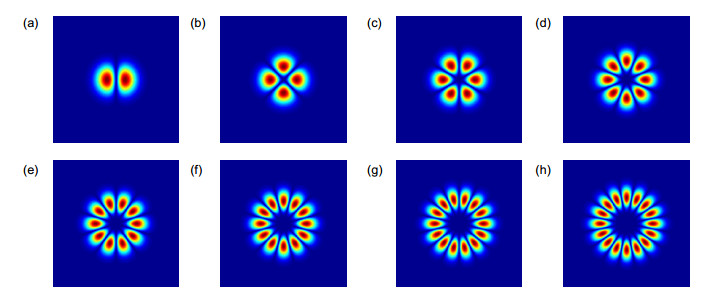
 下载:
下载:

